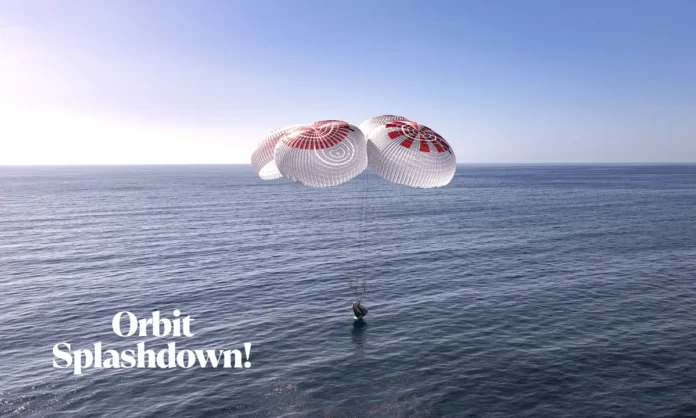Summary
- For the first time in history, a fully civilian space mission has completed a polar orbit around Earth.
- The mission also marked the first Pacific Ocean splashdown in 50 years, since the Apollo era.
- Space tourists aboard the mission hailed the journey as a “milestone moment for accessible space travel.”
From Poles to Pacific: Civilian Crew Redefines the Final Frontier
In a feat that bridges history and the future, a crew of space tourists has successfully completed the first-ever polar orbit by a civilian mission, culminating in a dramatic splashdown in the Pacific Ocean, the first of its kind since the Apollo missions ended in the 1970s.
The @PolarisProgram’s Polaris Dawn crew performed the first-ever spacewalk from Dragon, travelled farther from Earth than anyone since the Apollo program, and used @Starlink to connect with those back on Earth pic.twitter.com/GRv5AbtlNv
— SpaceX (@SpaceX) October 26, 2024
Launched aboard a privately operated spacecraft, the mission broke new ground for commercial spaceflight by circling Earth along a north-south trajectory—unlike the more common equatorial orbits—and touching down in waters near Hawaii early Saturday morning.
The spacecraft’s reentry and ocean landing mark a symbolic return to traditional splashdowns, a recovery method long associated with the golden age of NASA’s moonshots.
The ride to orbit was much smoother than I had anticipated. Apart from the final minute before SECO, I barely felt any G-forces—it honestly felt like just another flight.
— Chun (@satofishi) April 2, 2025
I had imagined it would feel like being in an elevator that suddenly drops, but that sensation never came.… pic.twitter.com/h7YMyPY9ld
A New Era of Polar Orbit Tourism
- The polar orbit allowed the spacecraft to pass over nearly every point on Earth during its mission.
- Unlike equatorial orbits, polar trajectories provide global observational coverage, useful for climate monitoring, reconnaissance, and now — space tourism.
- The route exposed the crew to stunning views of the Arctic and Antarctic poles, previously reserved for professional astronauts and military satellites.
“This is space tourism version 2.0,” said a spaceflight historian. “It’s not just about reaching orbit anymore — it’s about how and where you go.”
The mission’s polar orbit also demonstrated the growing ambition and capability of private spaceflight firms, which are now increasingly pushing beyond the boundaries of low Earth orbit for commercial missions.

Pacific Splashdown: First Since Apollo
- The crew’s return to Earth with a splashdown in the Pacific Ocean is the first in over five decades.
- The last such recovery occurred during NASA’s Apollo-Soyuz Test Project in 1975.
- Recovery teams, supported by both air and naval units, safely retrieved the capsule and crew.
While most recent space missions have relied on land-based landings (e.g., Kazakhstan or SpaceX’s Gulf splashdowns), this return to the Pacific is both a nod to historical NASA traditions and a strategic choice due to the mission’s orbital inclination.
Space agencies and analysts praised the decision, calling it a symbolic blend of past and future.
What’s Next for Commercial Spaceflight?
The success of this pioneering mission signals a new chapter in private orbital tourism, with greater emphasis on:
- Diverse orbital paths, including sun-synchronous and high-inclination orbits.
- Expanded landing capabilities across Earth’s oceans and remote zones.
- Multi-day tourism missions that explore novel views and longer durations in microgravity.
With multiple companies now preparing their own orbital offerings — from SpaceX’s Polaris Program to Blue Origin’s long-duration modules — the landscape for civilian spaceflight is poised for rapid evolution.


